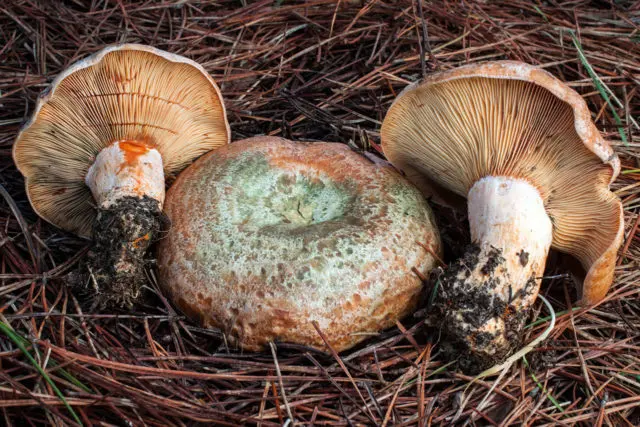Contents
Golden-yellow breast of the Russula family, inedible due to bitter juice. Known as: golden milky, golden milky breast, Lactarius chrysorrheus.
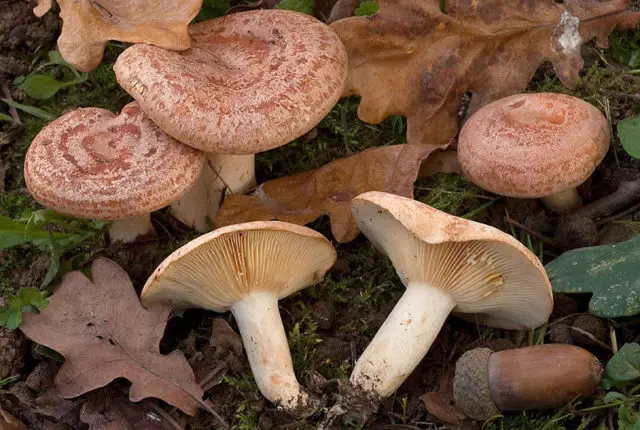
Description of the golden yellow mushroom
The species differs from other milkers in color. A detailed description of the fungus will allow you not to confuse it with other representatives of the forest kingdom.
Cap Description
The convex cap gradually opens, a depression forms in the center, and the strongly tucked edges of old fruiting bodies are wavy, bent upwards. The smooth skin is matte, shiny in the rain, with pronounced spots and circular zones. The width of the hat is 4-10 cm. The color is from ocher, pale salmon or orange-pink to reddish.
The thick pulp is brittle, odorless, yellow on the cut due to the whitish juice that stands out, peppery in taste, which quickly turns yellow. The thick plates are bifurcated towards the end, in young specimens they are white, in old ones they are creamy pink.
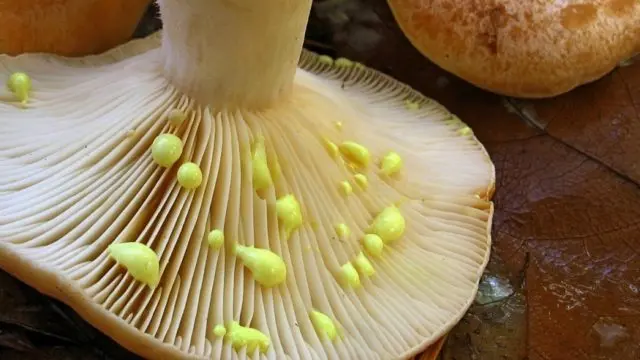
Description of the leg
The cylindrical leg is low, up to 8 cm, with age-related changes:
- first with powdery, whitish, then with a smooth surface of an orange-pinkish color;
- solid at first, gradually forms a hollow channel;
- thickened below.
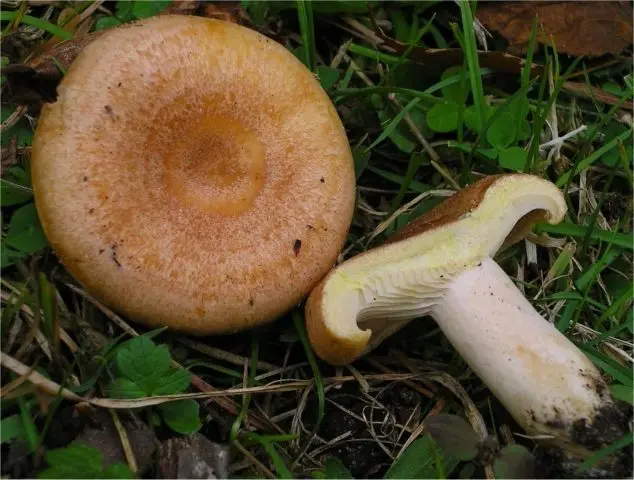
Where and how does the golden yellow mushroom grow
The species is often found from early summer to autumn in deciduous forests of the temperate zone of Eurasia. Mushrooms create mycorrhiza with oaks, chestnuts, beeches. Fruiting bodies are arranged singly or in clusters.
Is the mushroom edible or not?
Milky golden-yellow inedible because of the very bitter juice. There are statements that mushrooms need to be soaked for 5-7 days, and the causticity from the pulp disappears.
Twins and their differences
A great similarity of the inedible species with the oak lactic and real camelina.
The main differences between golden-yellow mushrooms and often collected twins:
- camelina juice is intense orange, gradually becoming greenish, like cut pulp;
- plates of camelina orange-red hue, turn green when pressed;

- the liquid that appears on the cut of the oak mushroom, white-watery, does not change color in the air;
- the flesh of the tannery is whitish, with a strong odor;
- the skin is brown, dry, with fuzzy circles.

A valuable yellow mushroom similar in name grows in damp areas of spruce-birch forests and is not among the twins.
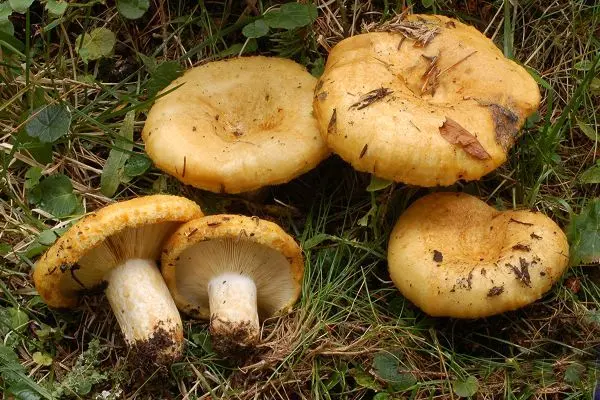
Conclusion
A golden-yellow breast can be accidentally taken into a basket. Mushrooms should be carefully sorted out. This species is soaked separately.










